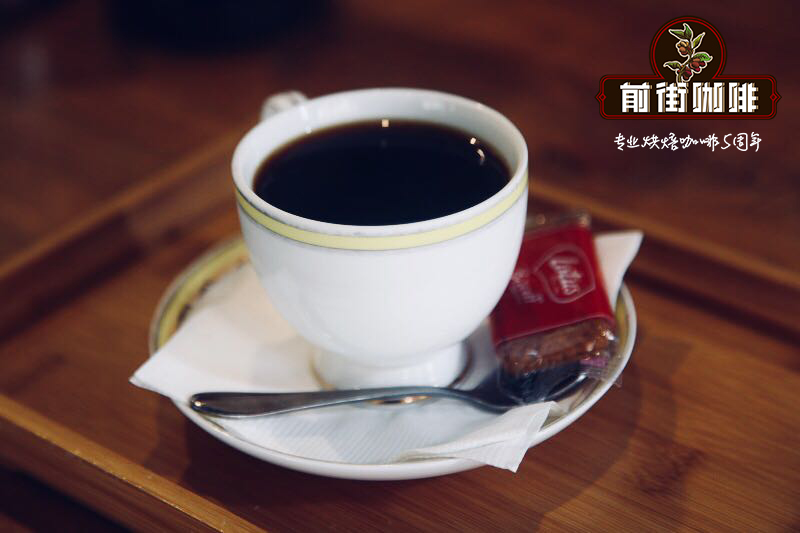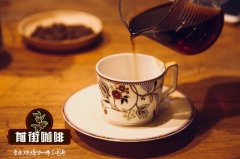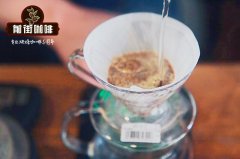Quickly learn the basic principles of hand-brewing coffee and explain the skills

Professional coffee knowledge exchange more coffee bean information please follow the coffee workshop (Wechat official account cafe_style)
Principle of hand-brewing coffee
We still have to get back to the essence, extraction. This is not to say that the European and American hand rush is better than the Japanese style. In fact, the European and American hand Chong serves the operation to some extent. On the other hand, the Japanese-style hand flushing technique is more pleasing to the eye, and it is done well, and it is equally delicious, but the style is different.
There is a truth that we will understand that the thicker the powder, the less flavor will be extracted per unit time. Therefore, when you inject water, you will let the water stay for a long time. This explains why Japanese-style water injection places special emphasis on a slow and extremely stable column of water compared with Europe and the United States. And Europe and the United States, is a relatively fine grinding, you can use a faster flow rate, a short time to fully extract. (the Japanese style takes about three minutes to complete) therefore, it is relatively easier to master.
Secondly, there are two concepts of water temperature. First, the water temperature during the extraction of hand-brewed coffee and the water temperature during drinking. The reason why it is fixed at 94 °is also to improve the extraction efficiency. But I do not have a warm cup this time, I hope that the high temperature of 94 °will come into contact with the coffee powder, then flow into the pot, and then pour into the cup, there will be a gradual cooling. In this way, about 70 °in the mouth is a more drinkable "start".
The reason for putting quotation marks at the beginning is that it is different from espresso. Espresso only has 30ml, which will cool too fast. Cappuccino milk is affected by temperature and is delaminated quickly. So espresso cups tend to be preheated, and the walls are very thick for heat preservation. But filtered coffee such as hand brewing, from 70 °to 50 °, the taste of the coffee will change a lot as it cools. Although it can be simply summed up from bitterness to acidity, the acidity here is the process of fruit acid prominence. Therefore, filter coffee cups tend to be thinner and taste more "vivid".
There are two reasons why I let the last water run out (2 minutes-2 minutes 30 seconds). First of all, whether there is excessive extraction, mainly from the sensory experience. If there is a mixed smell behind, you can change the degree of grinding to adjust (see the previous extraction article), because excessive extraction is ultimately closely related to how much water is taken from coffee powder per unit time. If we move the filter cup directly every time we see the last water, we cannot accurately judge that the water content is the same each time. Second, if you change the amount of water at will, you will change many parameters, for example, the gram weight of coffee will be reduced, and the extract will be reduced (because less water will bring out the coffee substance), but not in proportion. Eventually your concentration will increase. But these variables make it difficult for us to find a suitable hand-brewing coffee rule.
If you find that the coffee is too sour, grind it fine, and if the coffee has a mixed smell after drinking it, what you can do is to thicken it. Of course, there is also a situation that is both mixed and sour. It depends on whether your extraction is uniform and the freshness of the coffee beans.
Let's go back to the process of hand-brewing coffee extraction, after all, the water is over-powdered and filtered.
Of course, I am not saying that you should fix other parameters and only adjust the degree of grinding. for beginners, it is easy to get started and you can find the feeling of different coffee.
But it's interesting to change the parameters of a lot of hand-made coffee. If the gouache ratio I mentioned earlier is 350g:20g, you can try some changes to compare the differences. Or, change the extraction temperature, or change the steaming time. Here, we can do the experiment like the students in the common sense of coffee.
Also, worried about the uneven extraction of the cone, Yoshi made a cylindrical model out of several pieces of plastic and iron to make a hand punch.
Important Notice :
前街咖啡 FrontStreet Coffee has moved to new addredd:
FrontStreet Coffee Address: 315,Donghua East Road,GuangZhou
Tel:020 38364473
- Prev

Is the coffee made by hand sour? how to make coffee by hand so that it doesn't get sour? what's the trick?
Professional coffee knowledge exchange more coffee bean information please follow the coffee workshop (Wechat official account cafe_style) hand-brewed coffee, for many friends, is no stranger. It is different from the legal pressure and Philharmonic pressure we mentioned earlier in that coffee is no longer made through the principle of soaking, but through filter cups and filter paper, and water is produced through coffee powder. But whether it's soaking,
- Next

What is the relationship between Yemeni mocha coffee and mocha? can Yemeni coffee be made into fruit tea? Yemen is unique.
Professional coffee knowledge exchange more coffee bean information please follow the coffee workshop (Wechat official account cafe_style) Coffee is a drink made by roasting the seeds of several evergreen shrubs. The most common source of coffee is COFFEA. Robusta coffee is one of the more bitter, this plant is resistant to coffee leaf rust (camel spore rust vastatrix). There is a super in the world.
Related
- Beginners will see the "Coffee pull flower" guide!
- What is the difference between ice blog purified milk and ordinary milk coffee?
- Why is the Philippines the largest producer of crops in Liberia?
- For coffee extraction, should the fine powder be retained?
- How does extracted espresso fill pressed powder? How much strength does it take to press the powder?
- How to make jasmine cold extract coffee? Is the jasmine + latte good?
- Will this little toy really make the coffee taste better? How does Lily Drip affect coffee extraction?
- Will the action of slapping the filter cup also affect coffee extraction?
- What's the difference between powder-to-water ratio and powder-to-liquid ratio?
- What is the Ethiopian local species? What does it have to do with Heirloom native species?

